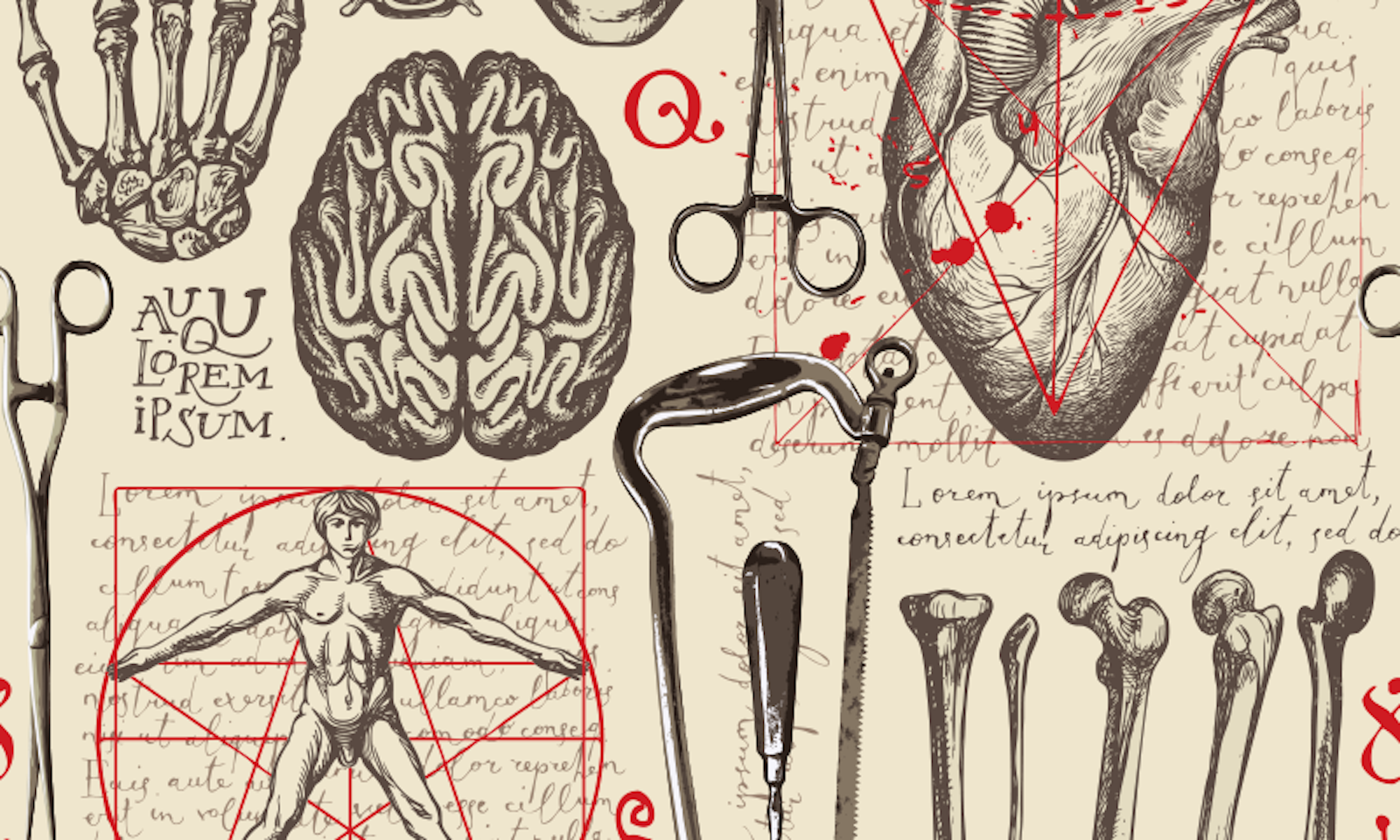A few years ago, medical historian and surgeon-in-training Suzie Edge was in the operating room preparing to amputate a patient’s leg. She began telling her colleagues just how such an amputation might have gone during the 1815 Battle of Waterloo, when there were no anesthetics or antiseptics, and doctors relied on surgical saws to do their work. With a combination of admiration and mild rebuke, the head of surgery told her, “Suzie, you really need to go and tell these stories somewhere else.”
So she did. Edge began posting short videos recounting gory stories of the body parts of historical figures on TikTok. She soon developed a large and adoring following. Many of them offered up their own bloody anecdotes in comments. “They just kept on suggesting things and saying, ‘Have you looked at this?’ ‘Have you looked at that?’” says Edge. “Suddenly, I had this huge pile of body parts.” It was enough material for a book, so she wrote one: Vital Organs: The History of the World’s Most Famous Body Parts. It was published earlier this year.
“It’s something that we’re not supposed to like, we’re not supposed to be interested,” she says of the broad appeal of guts and gore. But she found that thinking about actual bodies in all of their vital carnality really brought the historical characters she had been studying to life. Below, five of Edge’s favorite body part stories, in her own words.
He was the only person to stab the Queen and get away with it.
1. Charles I’s Neck Bone
The first story that really stuck with me was about Charles I. His head was chopped off in 1649, and he was stuck in a temporary vault with Henry VIII and a couple of others. But the Georgians [as the folks in England from 1714 to 1837 were known] loved to open tombs and coffins and have a poke, so when his body was found, the doctor had a look and said, “Oh yes, this, this definitely looks like somebody who’s had his head chopped off.” There was a slice through the cervical vertebrae. Now the doctor stole a little piece of sliced neck bone and took it home, and he turned it into a salt cellar. He pushed it around at dinner parties. This went on for years until Queen Victoria got wind of it, and she said, “That’s really odd, and, uh, can we put it back please?” So the coffin was opened up and it was put back. I just found that remarkable. It sent me digging for more of these body part tales.
2. Alexis St. Martin’s Stomach
I think one of my absolute favorites is a chap in Canada who, in the 1820s, was shot at close range in the chest. The wound didn’t really heal very well, so he was left with an open hole in his stomach. You could see into it. A doctor took control of him and did hundreds of experiments, putting things into this guy’s stomach. At one point he stuck his tongue in to see how it would taste. And it just went on from there. His story brought up a lot of wider ethical questions: What should we do with body parts and human remains and medical consent?
3. Queen Victoria’s Armpit
Women’s issues were not written about as much in medical literature during the 1800s, but I did go looking for good stories about women. In 1871, when Queen Victoria was in her castle in Scotland, she noticed an annoying swelling in her armpit. It was an abscess, a collection of pus under the skin. It was the size of an orange, which made it hard for her to move her arm, so they called surgeon Joseph Lister to come from Edinburgh. Lister, a surgeon who furthered antiseptics hugely, had developed this funny contraption he called the donkey engine. It could spray an area being operated on with carbolic acid [also known as phenol or benzenol], which would kill any bacteria it touched. So he sprayed this yellow mist all around Queen Victoria’s room and, mistakenly, into her face. She survived the surgery, and after that Lister would tell people he was the only person to stab the Queen and get away with it. Others tried to assassinate Queen Victoria—but nobody else got as close to her with a knife.
“Oh yes, this definitely looks like somebody who’s had his head chopped off.”
4. Louis XIV’s Fistula
The King developed a sore bum, and he prodded and poked it and wouldn’t leave it alone until he made it worse. And he, too, developed an abscess—a perianal abscess. And then it just got so bad that he eventually developed a fistula, a new hole in his rear end. Eventually a surgeon was called, because the physician couldn’t do much for him. But the surgeon said, “I’ll need to practice.” So he went out into the streets of Paris to find his test subjects, and he practiced on people in prisons. He came back and he operated on the King. It took three hours. But he cleaned out this wound, and the King survived. The best part is that the people within the King’s court, people with no fistulas, they began asking for this operation. Some of them probably didn’t end up as well as the King.
5. Napoleon’s Penis
Another wild story is about Napoleon. He was dead and they did an autopsy. At the time, the doctor who did the autopsy thought, “I know, I’ve got a good idea. I’m going to cut off this man’s penis.” And he did. And he handed it to a priest who smuggled it off Saint Helena island. It was passed between booksellers—booksellers are strange people—and put on display. Eventually it was bought by a urologist, and it now lives in a basement in New Jersey. The urologist did have a look: He X-rayed it and all he could say for sure was that it was a penis. He’s like, “Well, we can’t say it’s Napoleon’s.” But the woman who now owns it—because the urologist passed it on to his daughter when he died—she just keeps it hidden away and doesn’t want anybody photographing it or dealing with it. And yet, we’re still talking about it, aren’t we? ![]()
Lead image: paseven / Shutterstock




























